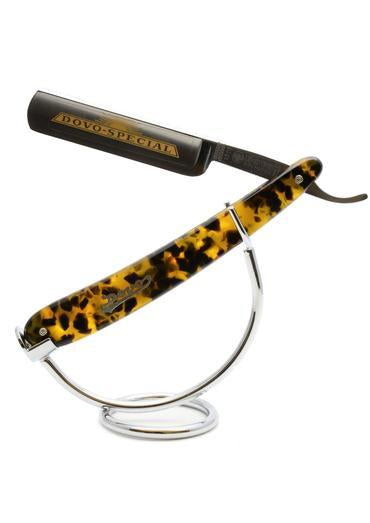If you’re new to the world of straight razor shaving choosing one can be a daunting process. There are multiple manufacturers and many design considerations to take into account before selecting the one that’s best for you. In this blog, we aim to familiarise you with all the jargon so you can make a more informed purchasing decision.
Parts of a Straight Razor

CUTTING EDGE
This part doesn’t need much explanation: it’s the sharpened edge of the straight razor blade that cuts through your beard. It’s important to maintain the sharpness of the edge by regularly stropping to keep your shave close and comfortable.
FACE
The face of a straight razor is typically ground to a concave shape known as either half-hollow or full-hollow. Rarely you may even find the face in the shape of a wedge but this is more typical in straight razors used by barbers in the 1800s.
HEEL
The lower end of the blade opposite the toe.
JIMPS
Jimps are little notches etched into the tang to aid grip. Not all straight razors have jimps.
PIVOT PIN
The pivot pin enables the blade to rotate in and out of the handle (also referred to as the scales). The pivot pin must provide enough friction to ensure the blade is kept steady as you shave.
POINT or TIP
Point or tip refers to the end of a straight razor, which can come in many shapes: curved, French tip, Spanish tip, Irish tip, barbers notch. Its shape determines how easy it is to manoeuvre around your moustache or nose. Most commonly you’ll find curved tips, which we recommend for beginners as they are more forgiving and you’re less likely to suffer from cuts and nicks.

SCALES
This is the handle of the straight razor. Typically made from horn, hardwood or celluloid plastic. Many shavers we speak to prefer horn handles as they are easy to wash and keep clean. The weight of the scales influences the overall balance of the straight razor so it’s not just an aesthetic choice.
SHOULDER
The upper end of the blade opposite the point.
SPINE
The top of the blade that runs parallel to the cutting edge. Its size has an impact on the weight of the straight razor, which in turn affects the balance.
TAIL
The tail is the part that protrudes past the pivot pin. It’s another important factor in determining the balance of the straight razor: it shouldn’t be too long or too heavy.
TANG
The tang serves as a grip for your fingers allowing you to hold the razor correctly whilst shaving.
TOE
The toe is opposite the tang and is where the cutting edge merges with the point. The angle of the toe will depend on the shape of the point.
Now you’re up to speed on the jargon here’s what you need to consider when choosing your new straight razor.
Blade Width
The width of a straight razor blade is often measured in eights of an inch - 4/8, 5/8, 6/8, 7/8, and 8/8 with 6/8 being the most common. The measurement is taken from the top of the grind below the spine to the cutting edge. For beginners, we recommend starting with a 5/8 width.
Blade Concavity
As we mentioned above the blade is ground to differing degrees - full-hollow, half-hollow etc. - and this will affect performance and sharpness of the cutting edge. A full-hollow grind will allow for a sharper cutting edge. If you’ve got a thick beard to cut through a full-hollow may not be suitable for you as the thinner blade will flex as it cuts through the thick hair.

Handle Material
The handle, or scales, are made in different materials. Typically you’ll find these in either hardwood, natural horn or celluloid plastic. Whacker prefers to make all their handles from natural horn as they are antibacterial and do not swell when immersed in water.
Manufacturers
When choosing your straight razor we would suggest going for a manufacturer from Solingen, Germany like Böker, Wacker, and Dovo or one who uses Sheffield Steel such as Theirs Issard to fabricate their blades as the quality of the steel, tempering and sharpness will be top quality. Avoid razors produced in China and Pakistan.




Thanks, very helpful